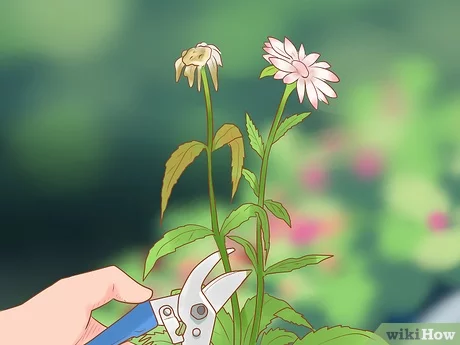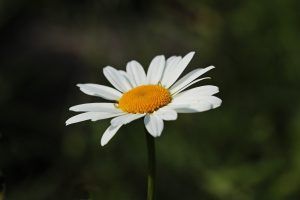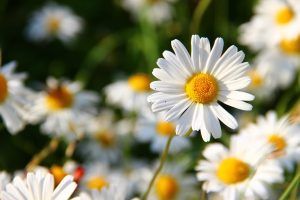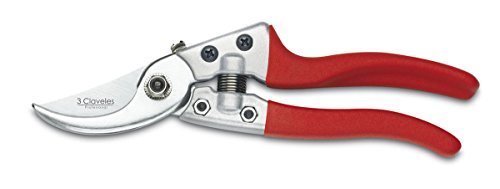Daisy Pruning: [Importance, Time, Considerations and Steps]

 The pruning of the daisies is a task that will help us to make the blooms more abundant and with better characteristics.
The pruning of the daisies is a task that will help us to make the blooms more abundant and with better characteristics.
It will also serve to eliminate all the parts that are damaged and that may affect the plant.
Daisies have the characteristic of starting their growth and flowering cycle in the spring and work quite quickly.This invites pruning to be carried out much more frequently than in other types of plants, even requiring several each year.
It is an action that could be considered easy to execute but it is better to do it carefully so as not to damage them and here we will tell you today how to do it successfully.
Why prune daisies?
There are two main reasons why daisy pruning is necessary: the health of the plant and the improvement in flowering.In the first case, the idea is to remove the damaged, dry and dead parts that it has and that can occur at any time.
In the second, a better current flowering is promoted at the same time as it stimulates new future flowering.One last reason, which is less frequent, has to do with the place where they are located.
If they are in pots, on the terrace for example, pruning becomes essential to control growth as they tend to spread rapidly.
The defoliation of daisies offers numerous advantages.
You can enjoy a tidier garden with cleaner plants.
You won’t have to deal with dead and scruffy flowers.
In addition, it encourages the appearance of more flowers on the plants that it decapitates. Although not all plants need or benefit from bleaching, daisies do.
When is it better to carry out pruning of daisies?
 The pruning of daisies can be carried out during the summer and autumn periods depending on the purpose pursued.
The pruning of daisies can be carried out during the summer and autumn periods depending on the purpose pursued.
In summer it will serve to help the plant bloom more and better and can be run just after a bloom has finished.
This is because the plant is directed to continue its reproductive cycle. If this procedure is not applied, it will go into a dormant state and flowering will probably end. That is, there will be only one in the year.
In autumn it is ideal to remove the damaged parts, because at this time the flowering has already finished and undeveloped shoots, withered leaves, etc. can be accessed. This way, the plant will have time to recover before next spring.
As soon as you notice that the flowers have wilted, you can safely cut them.
The only reason to leave spent daisy flowers is if you want to save the seeds for future use. Remove faded blooms from your daisies as often as you notice them for best results.
What tools should we use to prune daisies?
Daisies can easily be pruned using your fingers as their structure is soft and manageable.If this method is used, it is convenient to use gardening gloves that avoid damage to the hands due to irritation.
To achieve greater efficiency in the cuts, however, it is advisable to use small gardening shears.Remember that it is essential to disinfect them before and after use to avoid the transfer of diseases.The ideal is to use alcohol, but if you don’t have to wash them with soap it will be more than enough.
What should we take into account when pruning daisies?
Before pruning daisies in summer, it is necessary to detect the location of the flower buds that are born near the base of the plant.These shoots will help the next bloom so they should not be pruned.
It is essential to be attentive to this recommendation.In the case of autumn pruning, the main thing is to verify that the plant has completed its flowering cycle.
How to prune daisies without damaging the plant?
To avoid causing damage to the plant, it will be necessary to follow these steps:
- Remove all parts that are in poor condition . Although it is advisable to plan a single pruning in the year for this purpose, it is also possible to remove the parts that look dry or withered as they appear. By removing one or two at a time, the plant will not be affected.
- Adjust the stems so that they are all the same height and renew themselves when offering a new bloom. The ideal is to ensure that they all reach about 12 centimeters in height.
- Cut the stems that have grown out of order or that take a different direction than the one you have in mind . In this way, you will not only stimulate the new production of flowers but you will also guide it to occupy the area that you have established.
- In autumn pruning, the process must be more drastic and the height of the plant must be reduced to 60 centimeters, more or less. Here it will be necessary to eliminate at least half of the stems, the flowers that are dead, the withered leaves, etc.
The good news that daisies give us is that they have a very fast recovery process.This means that if they are in the flowering season, just 20 days after the pruning has been completed, they will give us a new batch of beautiful flowers.
In addition, the daisies support several prunings in each cycle so that there is no need to interrupt the blooms.
Daisies are beautiful perennial flowers that come in various colors and sizes. They brighten up any garden with ease.
If they are pruned at the end of the growing season, the daisies will look better and bloom better the following season.
Since perennials flower once a year, it’s important to prepare them each fall for the next growing season, and the best way to do this is by decapitating them.
You just have to remember to prune them when the fall season arrives and you start to notice that the petals and leaves of the plant are dead, discolored or withered.
It doesn’t take much time to prune daisies, but it is a very important part of your basic yearly maintenance. In fact, spending a little time pruning them makes your flowers last much longer and look better while they are with you.








![Photo of Almond Tree Cuttings: [Concept, Time, Rooting and Sowing]](https://www.complete-gardening.com/wp-content/uploads/2021/06/Que-significa-plantar-por-esquejes-1-390x220.jpg)